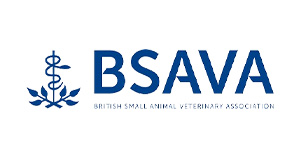Pet Dental Health Month: Don’t Neglect Your Pet’s Smile!

I thought I’d talk about teeth…..
Published on: Feb 24, 2022
This morning, I’ve had an 11 year old dog in with quite advanced dental issues. Herbie’s gum were inflamed and receding to the point where you could see some of the roots. I took off all the tartar and then checked which teeth were still viable but unfortunately, 17 of them had to be extracted.
It was quite a tricky procedure as Herbie also has a bit of a heart murmur, so we were very conscious of the impact of the anaesthetic but it went well and he’s on his way home now. He’ll be on soft food for a couple of days but should then be able to eat quite normally again – and he should also feel a LOT better as we’ve taken out all the sore bits!
The need for this sort of procedure isn’t that unusual for older dogs – it’s not necessarily that their teeth haven’t been well looked after, but can just be an unfortunate part of the ageing process. Dental problems will probably catch up with us all at some point, but regular preventative maintenance can help.
Like humans, cats and dogs have two sets of teeth – an initial ‘baby’ set which are then replaced by their permanent adult teeth. Cats have 30 adult teeth, similar to our 32, whilst dogs have a whopping 42 gnashers….. so it’s just as important to look after their pearly whites as it is for us.
Animals don’t tend to suffer with tooth decay as much as we do (their diets should be far less sugary!), but plaque and tartar are common issues that can cause big problems.
A study of almost 14,000 cats showed that oral disease is, by far, one of the most common diseases in cats. It’s estimated that 10% of cats aged 0-7 years have dental issues as the primary complaint, rising to 20% in cats aged 7-10 and older.
It’s also one of the most frequently occurring issues in dogs, with around 4 out of 5 dogs over the age of 3 showing signs of periodontal disease – and some breeds, like greyhounds, are particularly prone to it. Despite this, less than 5% of owners tend to be aware that their dog may have a problem.
As such, animal dental issues can make up a significant proportion of a modern day veterinary practice’s workload – I probably do at least one scale and polish or more significant dental procedure every day.
Of course we’re here to help, but it’s also important that owners know how important pet dental health is, how to spot the early warning signs and what to do about it.
Like humans, food and saliva left on our pets teeth forms plaque. Soft plaque can be quite easily removed by brushing but – if left to harden – it will form tartar. Caught early, most of these issues are completely reversible but if bacteria spreads below the gum line and causes inflammation that is then left untreated, it can result in tooth loss and other complications.
Again like us, early signs of dental disease can include bad breath, tartar build-up, red or inflamed gums and drooling – but animals can also be very good at hiding signs of oral pain, so regular dental check ups are always a good idea. The sooner any potential issues are spotted, the quicker (and more easily) they can be sorted.
As is usually the case, prevention is better than cure and the best way to maintain healthy teeth is (again, just like us) daily brushing. You can use a soft bristle toothbrush or may find it easier to use one of the small rubber toothbrushes that fit over your finger. Human toothpaste can be harmful to pets so always use an animal toothpaste.
Also think about their diet. Regular feeding of specialist main meal products as well as supplements like ‘Plaque Off’ should be a key part of any home dental programme. Complementary dental chews have a special texture, shape and active properties that have a gentle abrasive cleaning effect and can help to reduce the build-up of tartar by up to 80%.
And of course, you should make sure they have regular dental check ups – we always do this as a part of annual vaccination boosters, but consider more regular appointments if you’ve seen any symptoms. This means we can spot the need for a fairly straightforward intervention like a scale and polish, which can then help avoid more significant dental problems developing.

Author –
Adam Williams
February is Pet Dental Health Month! Learn why pet teeth matter, warning signs & how to keep your pet’s smile healthy.
pet dental health month | pet dental health | importance of pet teeth cleaning | signs of pet dental problems | pet dental check up | free pet dental check | Shepton and Wells Vets | Adam Williams











